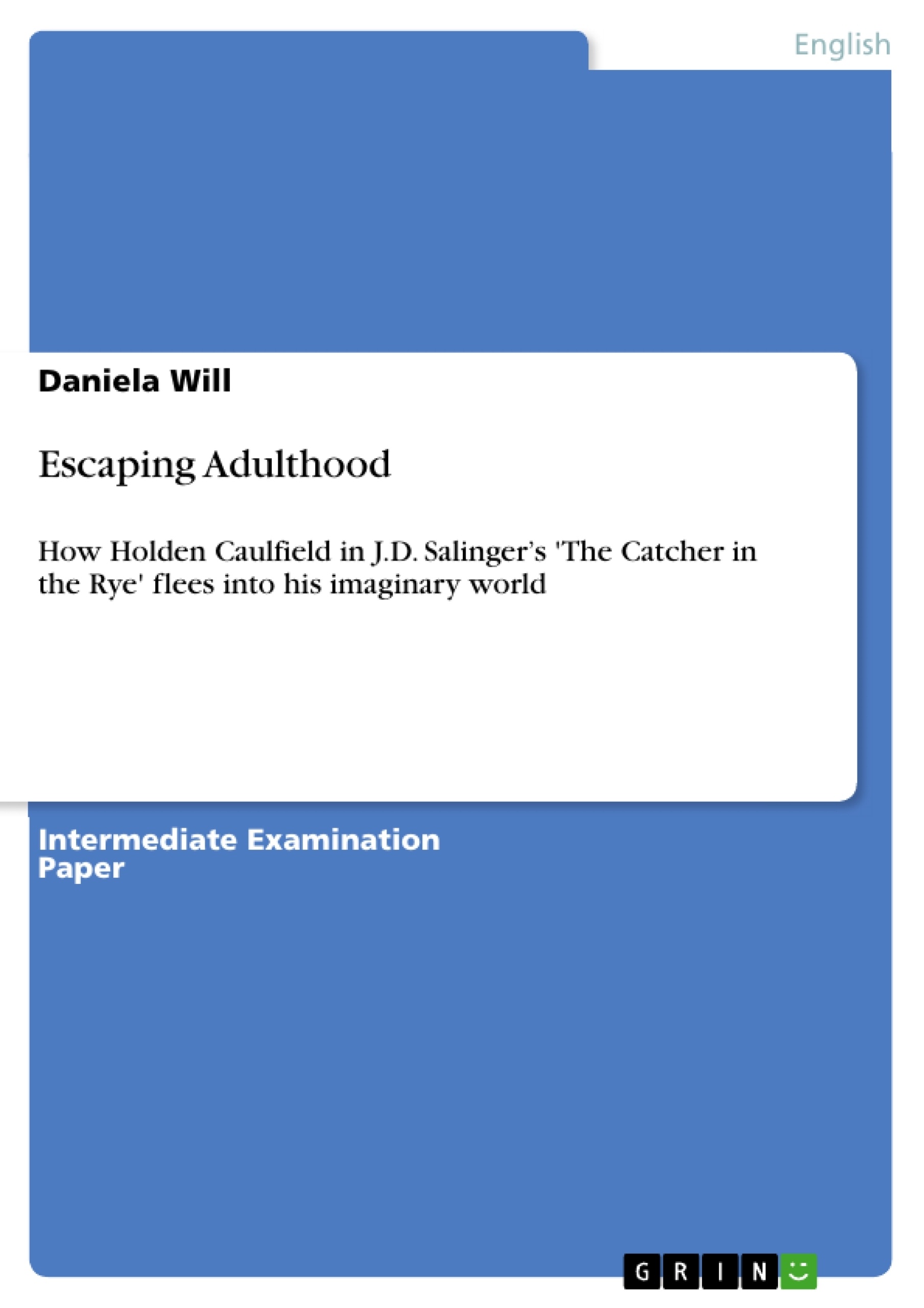The Catcher in the Rye by J.D. Salinger has been put on school syllabus in hundreds of schools not only in America, but all over the world. The glorification of drinking, smoking, lying, promiscuity and immorality have not least been the reasons for this book heading the list of banned books in a number of American schools (Frangedis 72). Still adolescents all over the world could identify with the rebellious teenager Holden Caulfield, to the worries of their parents. Helen Frangedis tries to ease those worries, arguing that the teaching of morals is in fact her justification for introducing the book to her students, since Salinger’s purpose was actually morally indeed (Frangedis 72). But how does Salinger point to what in his opinion is morally right? By presenting a protagonist that opposes all the wrong values. Hol-den Caulfield finds himself irrevocably growing towards a life that does not appeal to him at all: The life of an adult. With his sixteen years, he cannot imagine adapting to the society he sees everyday; a society characterized by phoniness, superficiality and wrong values. The on-ly solution he sees thus is to escape; to flee; into an imaginary world.
The following paper is going to have a close look at three essential questions that have to be posed in this context: What is the initial situation that dissatisfies Holden so much, that he wants to flee, and where to? In which ways does he flee? And, most important, what is the deeper psychological reason for his flight? By answering these questions it will be proved that Holden Caulfield flees adulthood because of his neurotic association of maturation and death.
Therefore, his real world, as well as the imaginary world he flees to, will be looked at, before analyzing his ways of fleeing and after all, taking a closer look at his neurosis.
Table of Contents
- Introduction
- The Two Worlds of Holden Caulfield
- Real World
- Holden's Imaginary World
- Ways of Fleeing
- Honesty and Lies
- Rejecting Society
- Preserving Innocence
- Holden's Neurosis
- Role of Sex
- Holden and Girls
- Death through Maturation
- Conclusion
Objectives and Key Themes
This paper aims to analyze Holden Caulfield's escape from adulthood in J.D. Salinger's *The Catcher in the Rye*, focusing on his motivations and the ways in which he attempts to flee into an imaginary world. Key themes explored in this work include:- The conflict between childhood and adulthood
- Holden's perception of societal phoniness and superficiality
- Holden's desire to preserve innocence and protect others from the "evil" of adulthood
- The role of neurosis and death in Holden's flight from maturity
- Holden's attempts to create an alternate reality through his imaginary world
Chapter Summaries
The introductory chapter explores the cultural context surrounding *The Catcher in the Rye* and introduces Holden Caulfield, a teenage protagonist who struggles with the transition to adulthood. It highlights his rejection of societal values and his desire to escape into a world where innocence is preserved. The second chapter examines the two worlds inhabited by Holden: the "real world" he actively rejects and the imaginary world he seeks refuge in. The "real world" is characterized by phoniness, superficiality, and the pressures of growing up. Holden's relationships with classmates, teachers, and adults are explored, revealing his inability to connect authentically. His strong attachment to his sister, Phoebe, and his idealized image of Jane Gallagher offer glimpses into his longing for childhood innocence. The third chapter delves into Holden's imaginary world, where he constructs different roles to cope with his fear of maturation. His self-perception as critically injured, movie-hero, runaway, and guardian angel are analyzed as coping mechanisms to distance himself from the anxieties of adulthood.Keywords
The central keywords and focus topics of this analysis include *The Catcher in the Rye*, J.D. Salinger, Holden Caulfield, adolescence, adulthood, maturation, death, neurosis, phoniness, innocence, and imaginary world. These terms capture the core themes and concepts explored in the text, particularly the protagonist's struggle with the transition from childhood to adulthood and his complex relationship with the "real" and "imaginary" worlds he inhabits.- Arbeit zitieren
- Daniela Will (Autor:in), 2010, Escaping Adulthood, München, GRIN Verlag, https://www.hausarbeiten.de/document/152709


